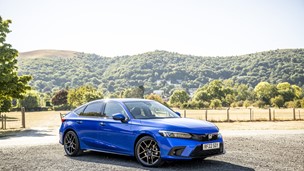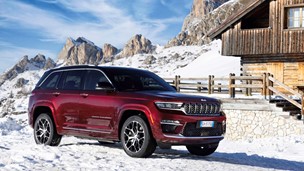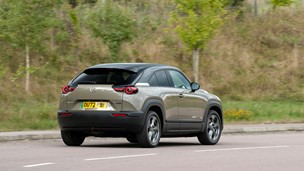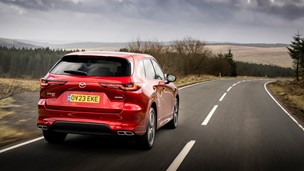For the first mile or so I was extremely impressed. In fact I was impressed even before I got in. The Sport version of the "junior" Lexus has the stance, the alloy wheels, the blatantly visible brake calipers and - in the case of the test car - the dark metallic green paintwork to quicken the heart of the enthusiast driver and lead to the expectation of great things.Interior impressions are good too. You won't, for example, have sat behind the wheel for more than a few seconds before you are staring at the instrument display. I suspect that as a child the designer must have spent several happy hours one day playing around with an old watch.When he managed to prise the back off it he would have stared at the innards and experienced a moment of inspiration, which found its full expression years later when he created the dials-within-dials arrangement on the Lexus. Some people may not like it, but I do.Not as much as I like the gearchange, though. Precise, beautifully weighted, brilliant. Yet not quite as good as the steering, which you know from the first application is all but perfect. And to back it all up, the two-litre six-cylinder engine sounds fabulous. What a car!So much for the first mile. Then I left town, and the disappointments chimed in to such an extent that before the third mile had passed I had gone off the little Lexus almost completely.There are no fewer than six incredibly closely-spaced gears for you to enjoy slipping the alloy lever into, and the IS 200 doesn't seem to perform particularly well in any of them. Perhaps it's because the sound, look and feel of the car lead you to expect more than it can actually deliver - and in fact the performance figures are not too dusty for a two-litre - but the impression is one of all mouth and no trousers.On the other hand, I wouldn't want the Sport to perform any better until significant changes had been made to the suspension. Driving around town it feels terrific, and you can't wait to tackle some fast country roads. But when you do, the car is all over the place. It's at its worst over crests - the nose seems to be continuing upwards while the front wheels are coming down, and you feel you have very little control over which way the car will go next. It won't do.A long motorway journey put these concerns from my mind for a while, and also gave me the chance to try out the satellite navigation. The method of dialling in your destination is tricky to master at first (yes, I know I should have read the instructions) but overall this is the best system I've come across, and so far the only one which I felt was actually more convenient to use than a map.But I would still prefer to spend the money on proper suspension and a road atlas.Second opinion: At rest, brilliant. On the move, different story. The IS 200 has lovely detailing, maybe overdone in places, and if I owned one of these cars I'd want to take the instrument panel into the house with me at night. There's a potentially very fine car here, whimpering to get out. One solution would be to give Lotus half a dozen "mules", a big cheque, and instructions to sort out the suspension. Ross Finlay. Engine 1988cc, 6 cylinders Power 153bhp Transmission 6-speed manual Fuel 29.1mpg Acceleration 0-62mph: 9.5 seconds Top speed 134mph Price £23,000 Details correct at publication date



